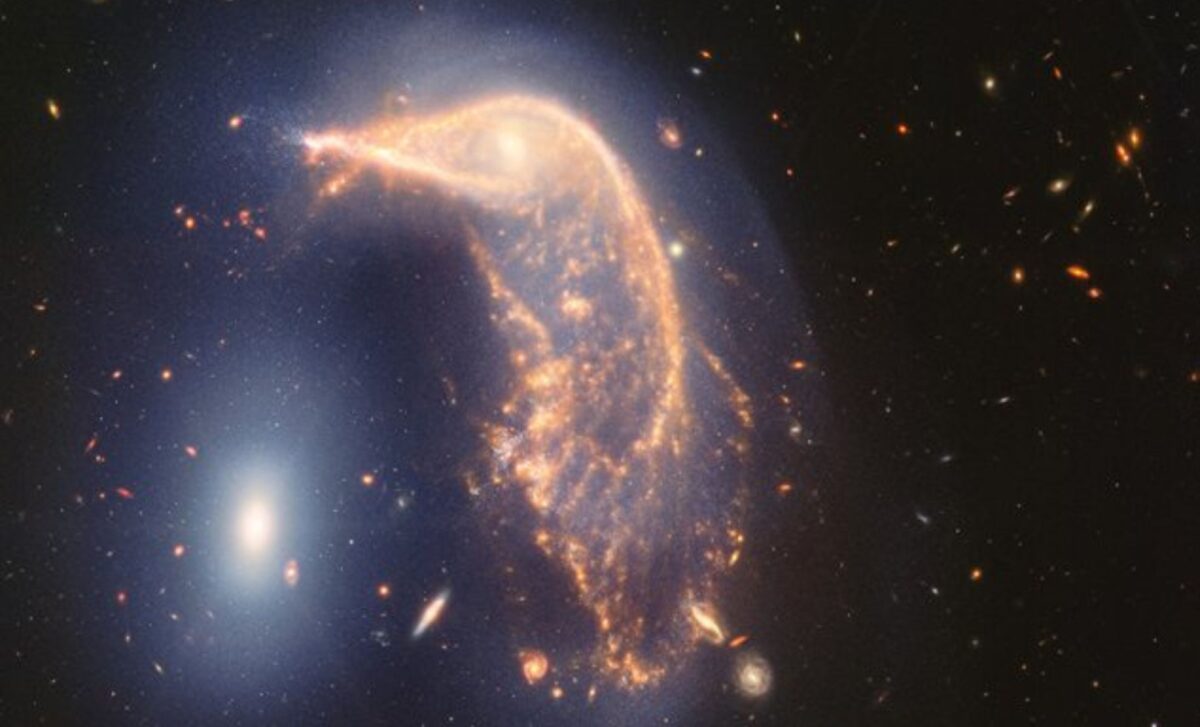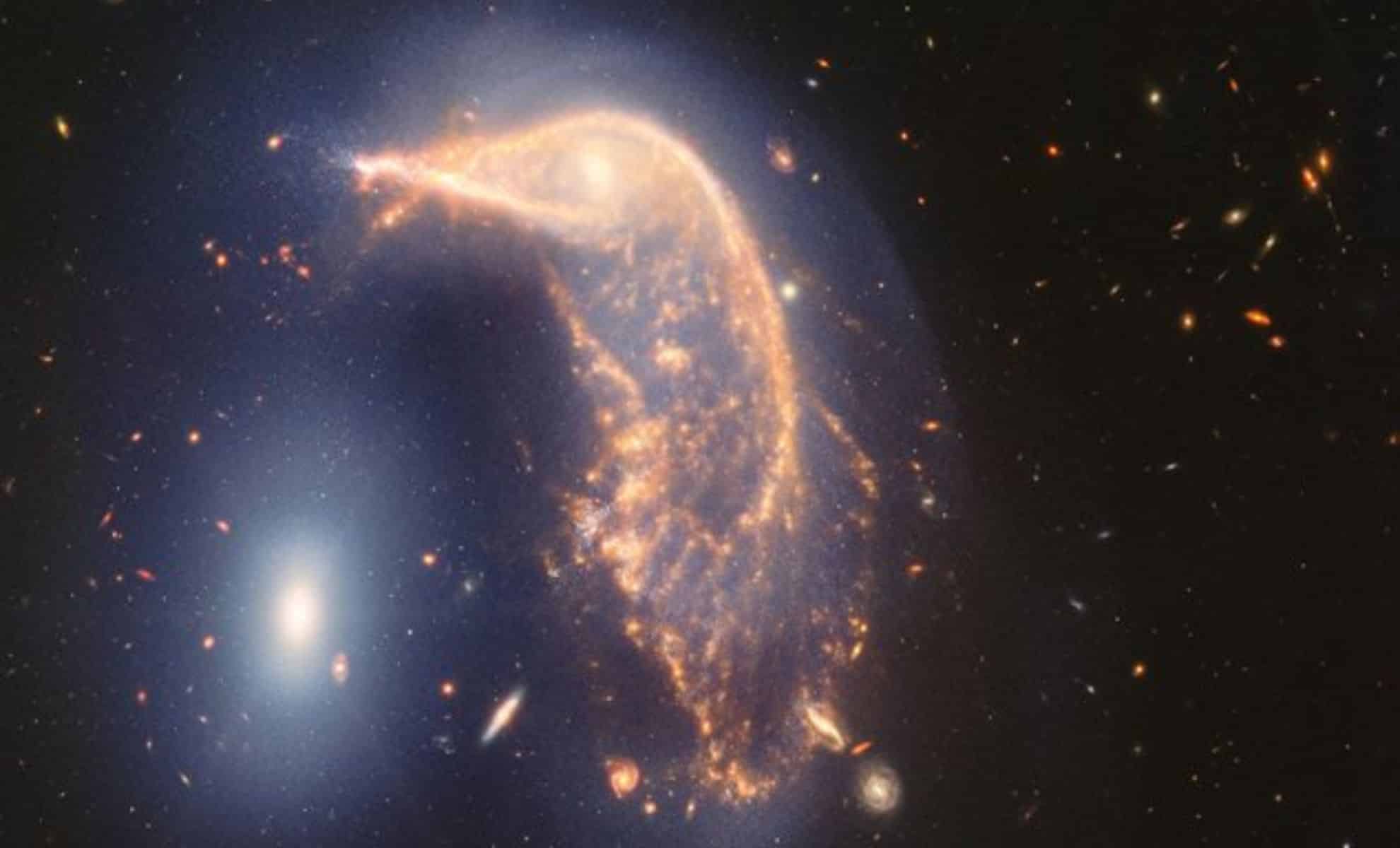NASA's James Webb Space Telescope has captured a breathtaking image of two galaxies, collectively known as Arp 142, merging in a cosmic collision.
This stunning photograph, released to mark the second anniversary of the telescope's operations, showcases the powerful capabilities of Webb in uncovering the mysteries of the universe.
Unveiling the Penguin and the Egg Galaxies
The image features two galaxies nicknamed "the Penguin and the Egg" due to their unique shapes. The "Penguin," a distorted spiral galaxy, appears to be guarding the "Egg," an elliptical galaxy positioned closely beside it. These galaxies are located 326 million light-years from Earth in the constellation Hydra. NASA reports that the two galaxies first interacted between 25 and 75 million years ago and are expected to merge completely over hundreds of millions of years.
We’re celebrating two years of science for @NASAWebb! 🎉
The second anniversary image from the largest telescope in space shows two interacting galaxies called the Penguin (NGC 2936) and the Egg (NGC 2937), entwined in a slow cosmic dance: https://t.co/x4GImWwTRw pic.twitter.com/po60sNkQQN
— NASA (@NASA) July 12, 2024
The Near-Infrared Camera and Mid-Infrared Instrument on Webb have revealed intricate details of this interaction. The Penguin galaxy's spiral arms, once regular and structured, have been stretched and distorted through gravitational interactions with the Egg, creating a dynamic and visually compelling scene. "With remarkable images from the corners of the cosmos, going back nearly to the beginning of time, Webb’s capabilities are shedding new light on our celestial surroundings and inspiring future generations of scientists, astronomers, and explorers," said NASA Administrator Bill Nelson.
The Scientific Significance of Galactic Collisions
The merging of the Penguin and the Egg galaxies is more than just a visual spectacle; it provides valuable insights into galactic evolution and star formation. Gravitational forces at play in this collision cause gas and dust within the galaxies to collide, leading to bursts of star formation.
These new stars are visible as bright regions within the galaxies, particularly in the Penguin's extended arms and tail. The interactions have also resulted in the creation of stellar nurseries, where new stars are born from the dense, smoky material filled with carbon molecules.

The Egg galaxy, which contains older stars and less gas and dust, remains relatively undisturbed in structure. This stability, contrasted with the dynamic changes in the Penguin, offers a fascinating study of how different galactic compositions respond to collisions. The visualization shared by NASA allows viewers to "fly" through the new image, providing an immersive experience of this cosmic event. The blue haze captured in the image represents a mix of stars and gas, illustrating how the two galaxies are physically connected.
Webb's Transformative Capabilities in Space Observation
The James Webb Space Telescope, a collaboration between NASA, the European Space Agency, and the Canadian Space Agency, has revolutionized our understanding of the universe since its launch on December 25, 2021. Positioned about 1 million miles from Earth, Webb orbits the sun and captures detailed images in infrared light, a spectrum invisible to the human eye. This capability allows Webb to peer through gas and dust that obscure other telescopes, revealing hidden structures and details.
"Webb is providing insights into longstanding mysteries about the early universe and ushering in a new era of studying distant worlds, while returning images that inspire people around the world and posing exciting new questions to answer," said Mark Clampin, director of NASA’s Astrophysics Division.
The telescope's sensitivity and resolution enable it to detect molecules in exoplanet atmospheres and observe the intricate processes of star formation and galactic evolution. Webb's continuous observations and discoveries, including the detailed study of the Penguin and the Egg galaxies, are expected to advance our knowledge of the universe for at least the next 20 years.




